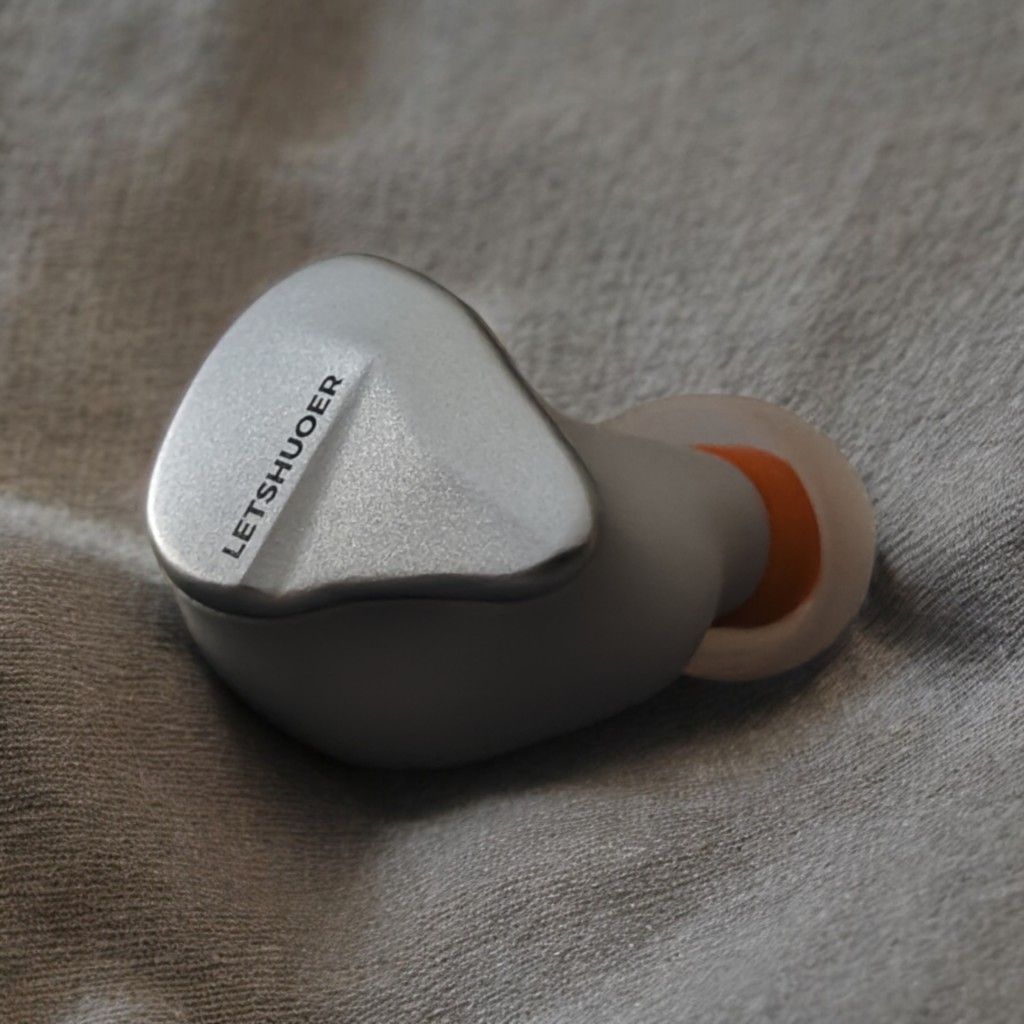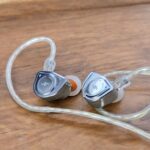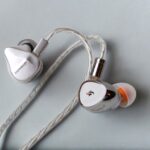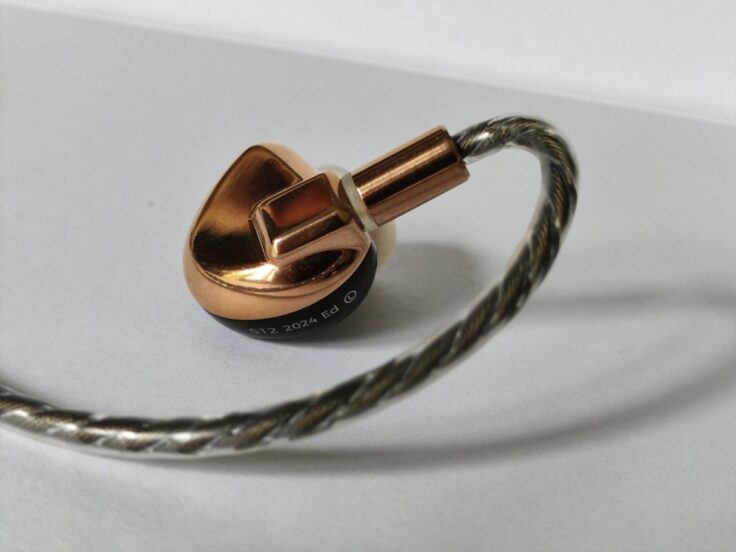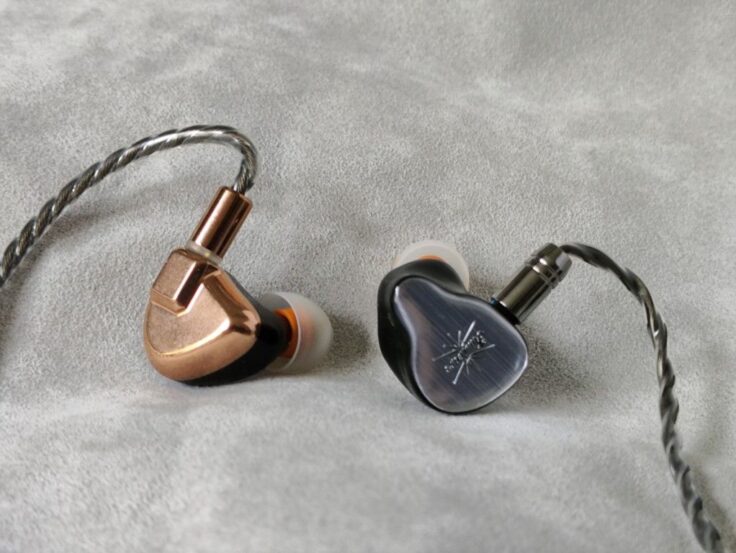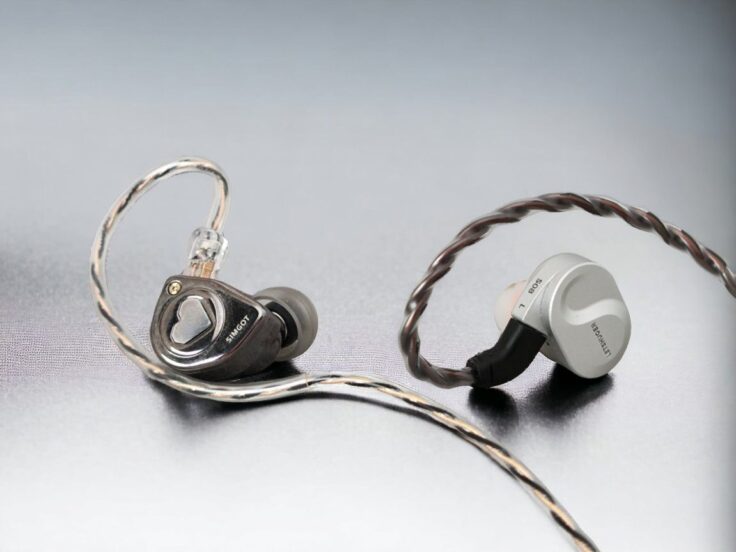In a market saturated with bass-heavy IEMs, the Cadenza 4 emerges as a breath of fresh air. I’ve dubbed it the “midrange king” because of its outstanding midrange performance, delivering clear and accurate vocals and instruments. Its balanced sound signature and ability to deliver subtle nuances all along the frequency spectrum, provides a distinct listening experience that appeals to audiophiles who prioritize a prominent midrange over thunderous bass or unnaturally sharp treble.
The Cadenza 4 is a brand new hybrid quad-driver in-ear monitor earphone. The number in its name refers not to a lineage but to the fact that the Cadenza 4 has four drivers, one dynamic driver, and three balanced armatures. Thus, the 12-driver flagship from Letshuoer is called Cadenza 12. The word “cadenza” is a musical term that refers to a virtuoso solo passage, typically near the end of the piece. I haven’t heard the Cadenza 12, but the Cadenza 4 does indeed honour its name.
Letshuoer is an established brand in the world of earphones and has been making high-end personal audio equipment for professionals and consumers for almost eight years. They might be best known for the very popular S12 PRO planar magnetic IEM, which I have reviewed previously on The Headphoneer. I’ve also reviewed the excellent Galileo.
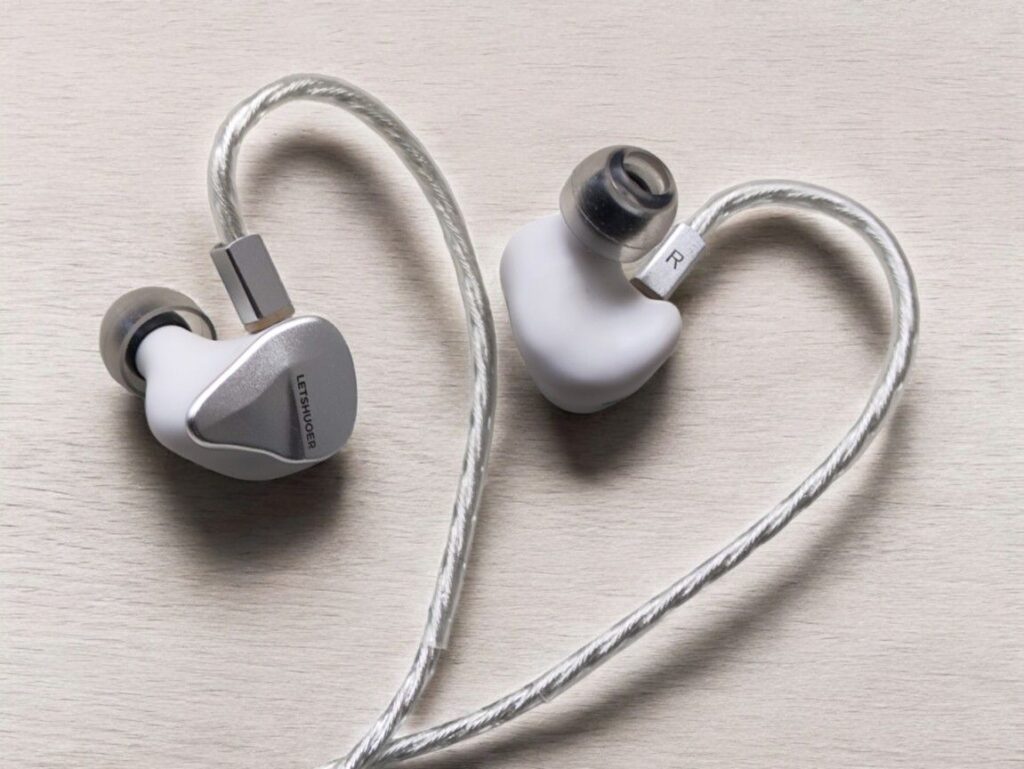
MAIN TAKEAWAY
- Detailed and non-fatiguing sound
- Present and articulate midrange
- Refined treble
- Great bass quality
- Sensitive to tip-rolling
- Bass quantity depends on tip choice
- Extremely good passive sound isolation
- Lightweight
Price at launch / when reviewed: 249 USD.
Disclaimer: The review unit was sent to us by Letshuoer for the purpose of this review with no strings attached.
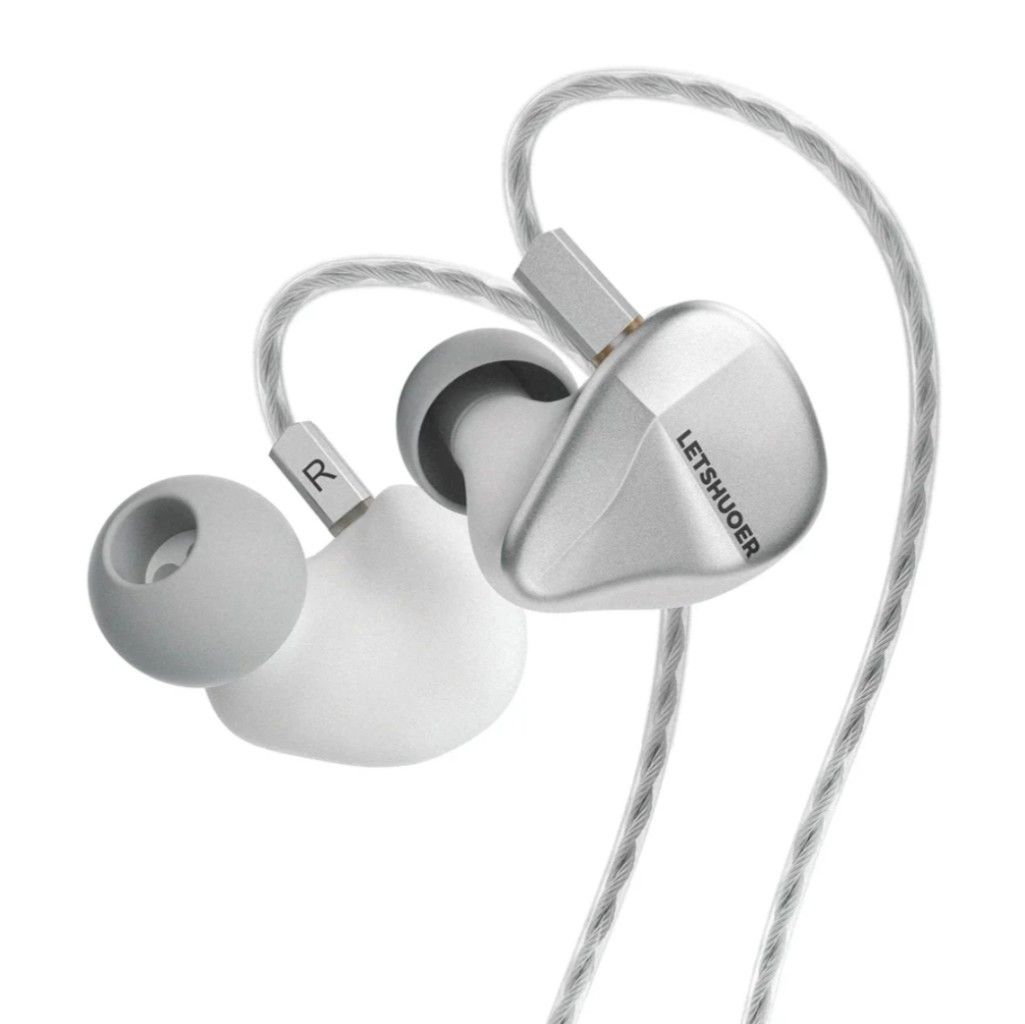
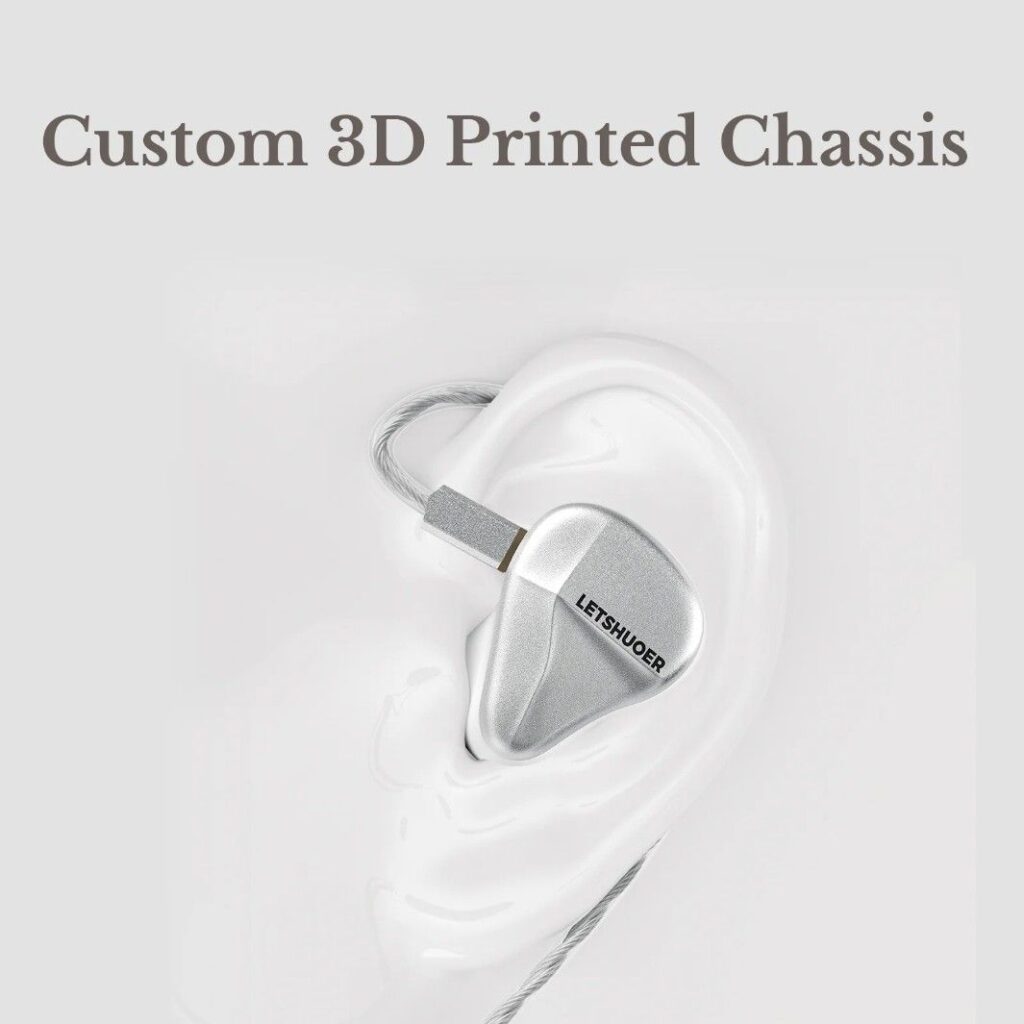
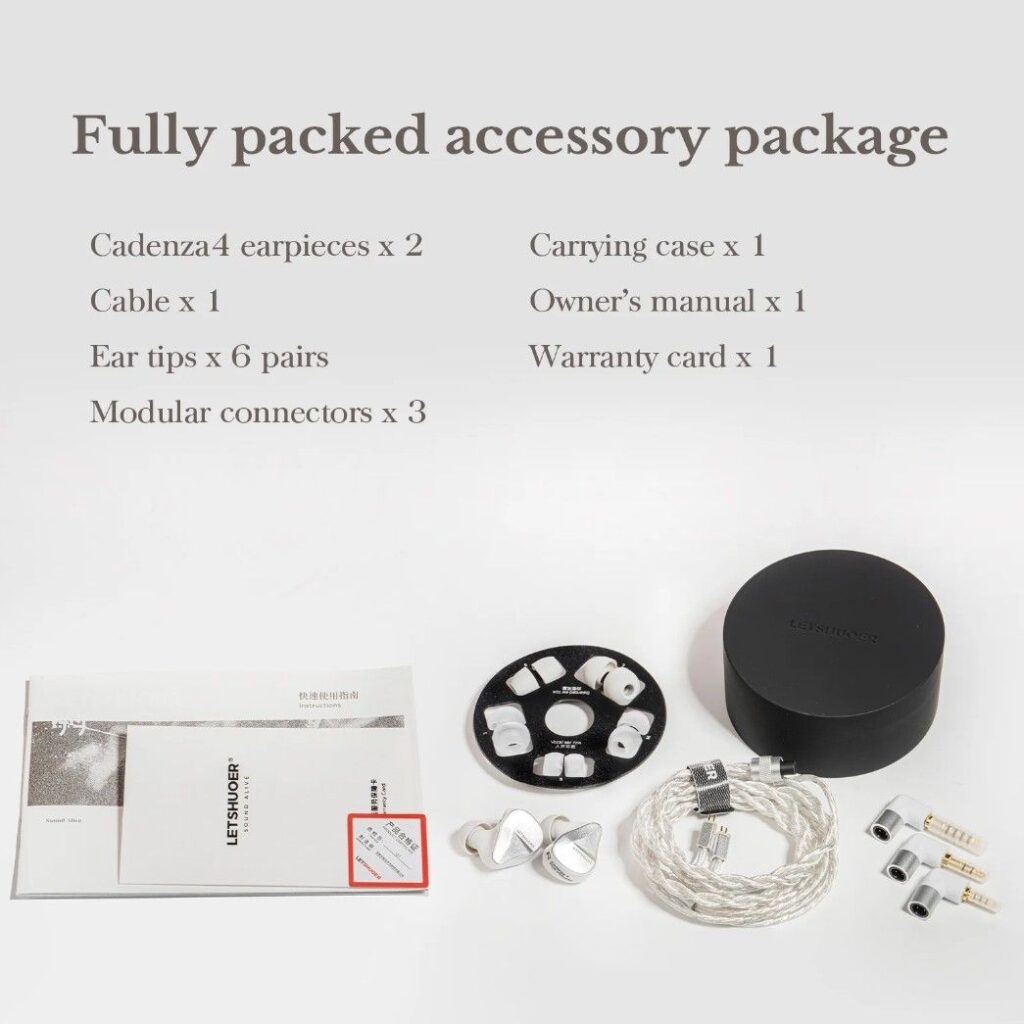
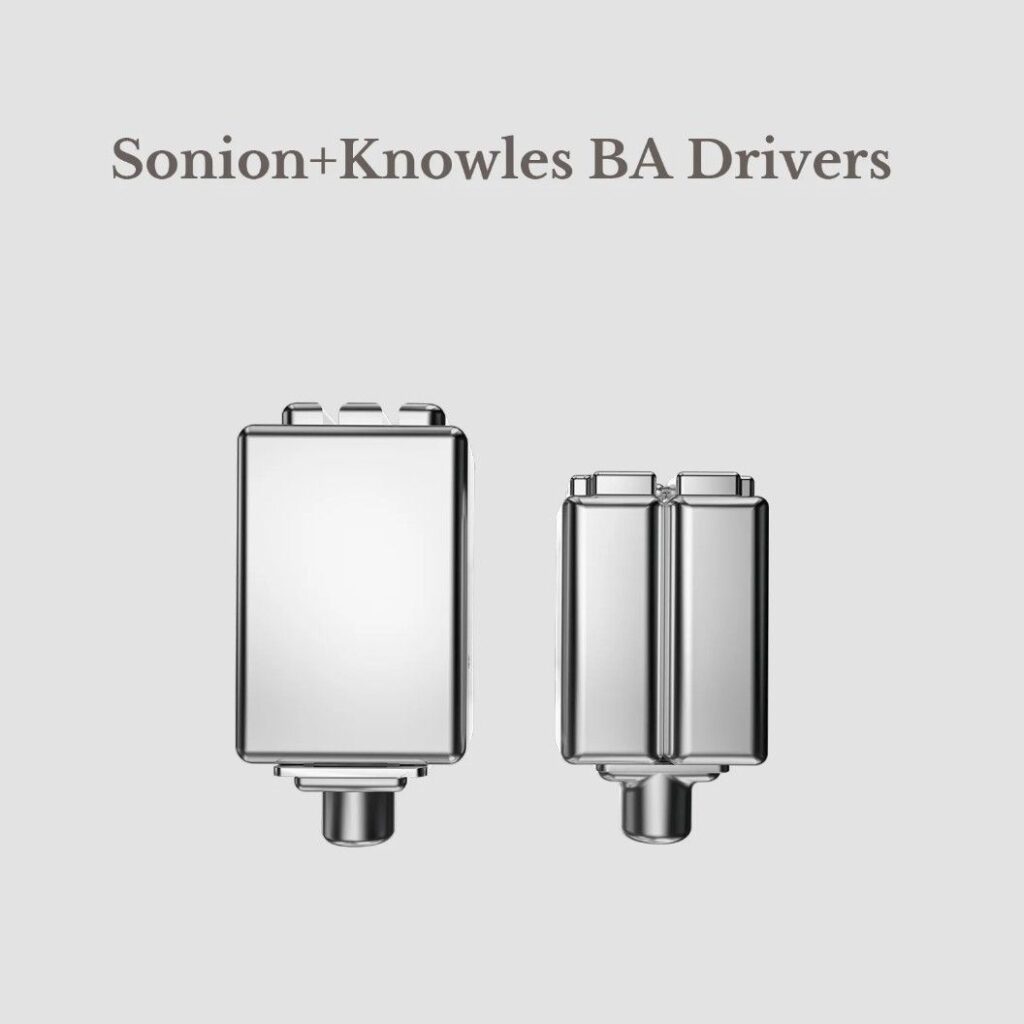
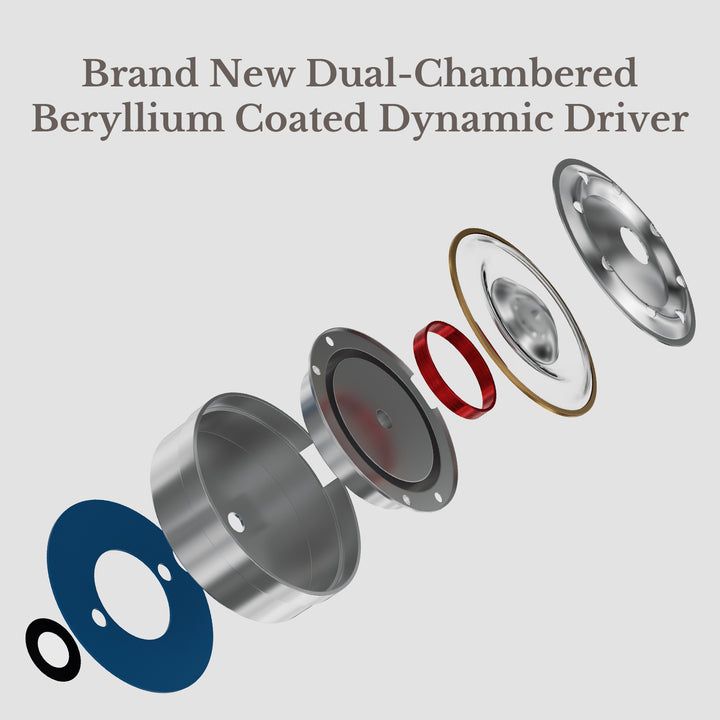
LETSHUOER CADENZA 4 SPECIFICATIONS
- Wired In-Ear Monitor
- Driver: 10mm beryllium coated DD, 1 Sonion BA, and 2 Knowles BA
- Impedance: 15 ohms
- Sensitivity: 102 dB
- Frequency Response: 20Hz – 40kHz
- Chassis Material: 3D-printed resin, anodized aluminum faceplate
- Cable: 1.2 m, 392-strand silver-plated monocrystalline copper
- Earphone connectors: 0.78 mm dual pin
- Audio Connectors: 90-degree angled 2.5mm, 3.5mm, and 4.4mm interchangeable connectors
Check the current price here:
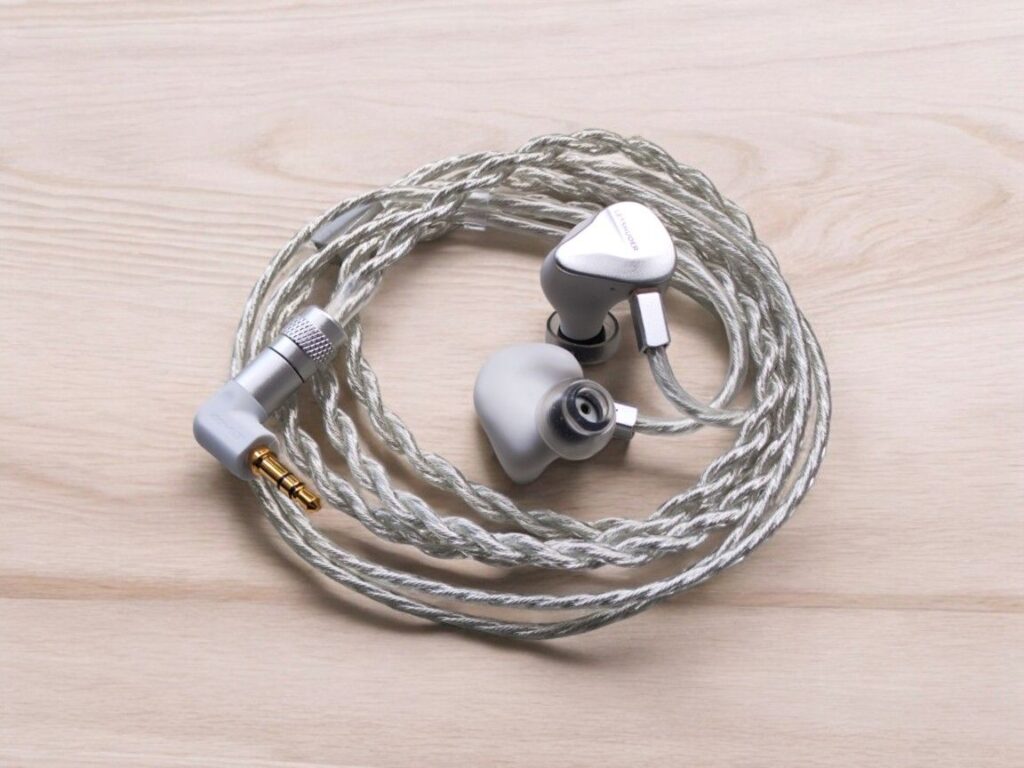
BUILD, DESIGN, AND COMFORT
The Cadenza 4 utilizes a unique setup featuring a proprietary 10 mm dual-chamber dynamic driver with a beryllium-coated diaphragm, along with one Sonion and two Knowles balanced armature drivers.
To channel the correct signal to each driver, the Cadenza 4 uses an electronic four-way crossover. The electronic crossover allows for precise control of frequency distribution and can correct for phase errors.
From the drivers, the sound is channeled into three 3D-printed acoustic tubes that are 50 μm thick. These reduce resonances and aim to ensure an accurate, smooth, and consistent sound.
The Cadenza 4 is primarily made out of 3D printed resin in a very light gray / white finish with an aluminium alloy faceplate, which makes the colour-design stand out in the crowd. It’s ergonomically designed and extremely light. It sits comfortably in the ear, but it protrudes a bit.
The passive noise isolation is absolutely superb and among the best you can get. There is a small vent hole on the earphones, but apparently barely anything comes through.
In the box are two types of silicone ear tips and a very nice oxygen-free silver-plated copper cable with interchangeable connectors (2.5, 3.5, and 4.4 mm). There is also a hard-case storage box that is unnecessarily difficult to open because you have to unscrew the lid. The earphones and the cable are nice; otherwise, the accessories are not especially impressive.
TIPS
There are two different-sounding types of silicone tips included with the Cadenza 4: The gray type is called “neutral” and has a narrow bore, while the clearer tips are called ”vocal” and have a wider and shorter bore.
The shortest vocal ear tips didn’t quite work well for me since I couldn’t get a seal without a lot of effort. The narrow, neutral tips fit me better. I did, however, get an impression of how they sound: the neutral tips are more bassy, while the vocal tips are more mid-range centric.
The quality of the supplied tips is nothing special, and as always, I resort to third-party tips.
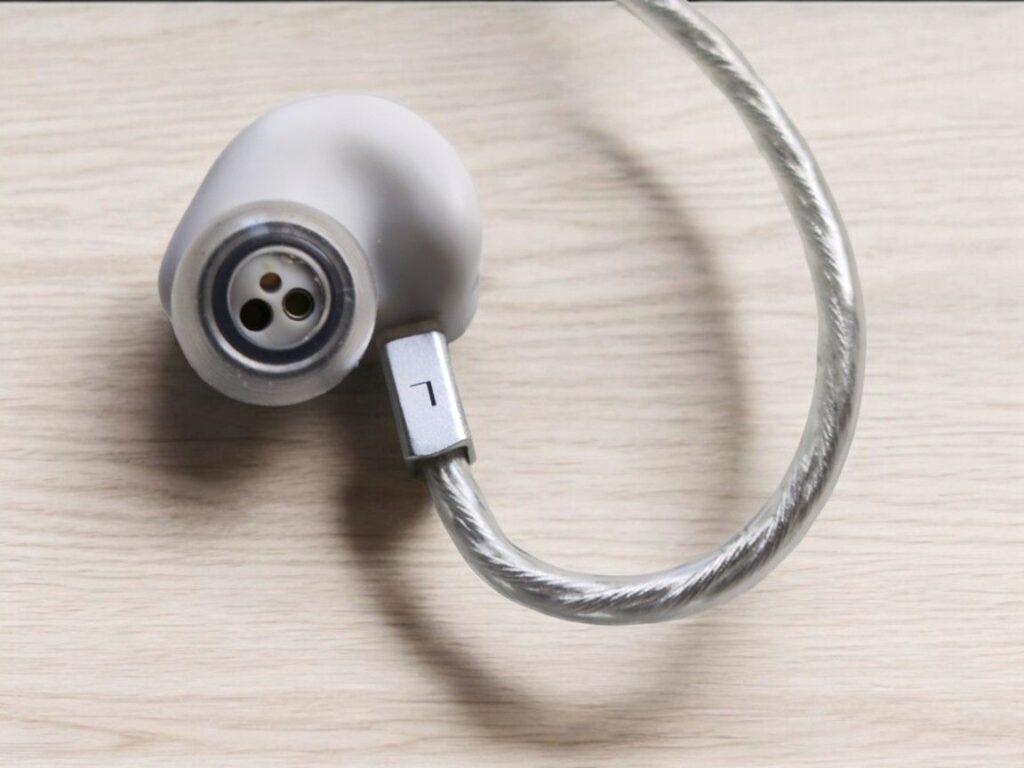
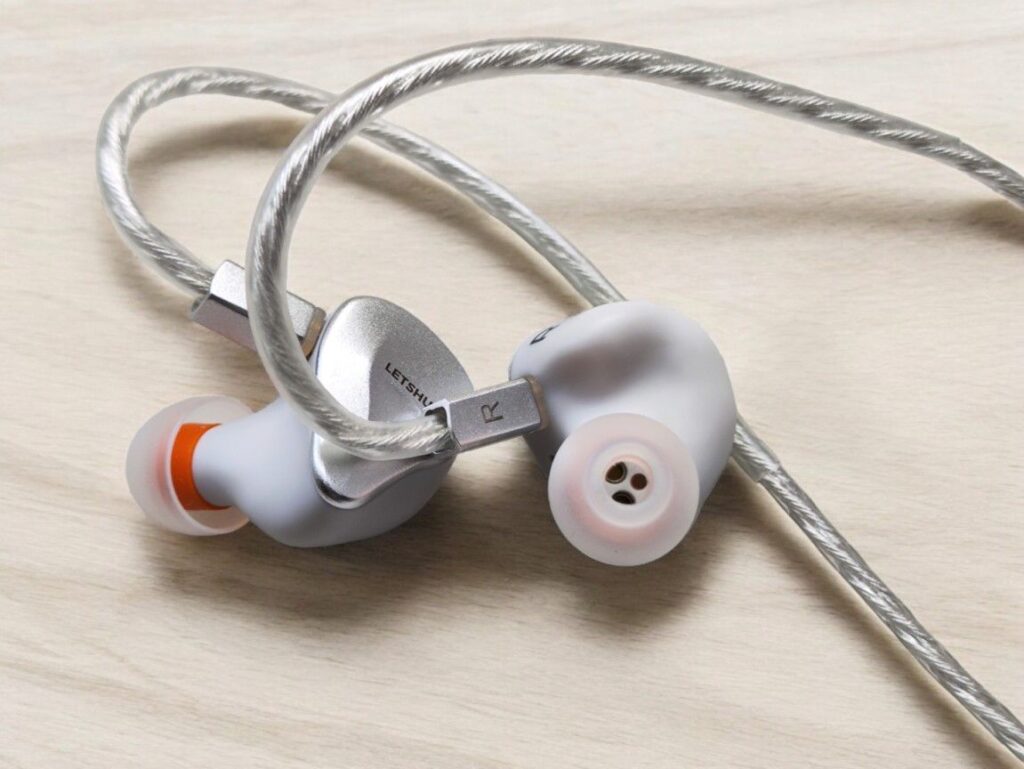
Both the SpinFit CP145 tips and AZLA SednaEarFit Crystal tips work very well, although the fit on the nozzle is tight.
The SpinFit has more bass and sounds similar to the stock neutral tips. The AZLA Crystal tips have less bass and resemble the stock vocal tips.
I ended up mainly using the Crystals for my comparisons and listening, but I will comment along the way on the CP145 tips too.
You can go check out the tips here
- Amazon Spinfit CP145 tips
- Amazon Azla Crystal
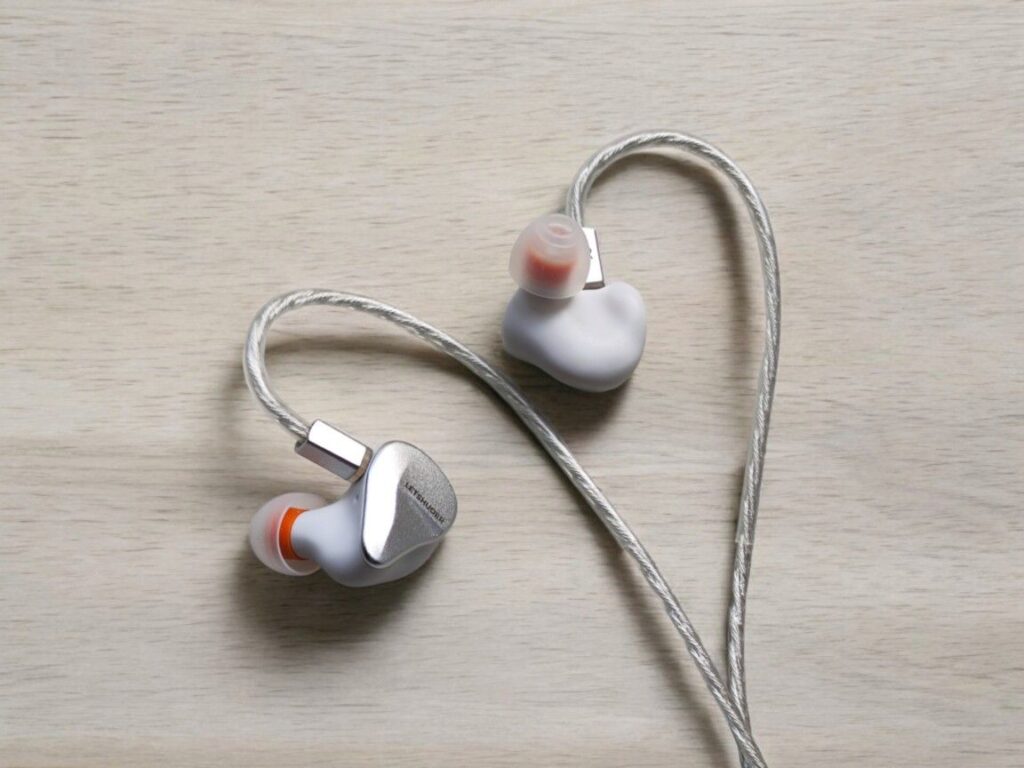
LISTENING IMPRESSIONS
Associated equipment: Topping A90 as an amplifier and the RME ADI-2 DAC FS. The RME sounds excellent by itself, but it’s more practical for me to use the Topping.
Ear Tips: Because the Cadenza 4, as mentioned, is quite susceptible to tip rolling and even comes with two different sounding tips, I wanted to make a comparison that did include two different types of tips. Because I didn’t find the included tips to fit me well, I used the wide-bore AZLA SednaEarFit Crystal tips and the medium-bore SpinFit CP145 tips, which share many traits with Letshuoer’s stock “vocal” and “neutral” tips, respectively. I will comment on both tips for each track.
In The Mountains by Espen Eriksen Trio
Crystal tips: Starting out with a nice jazz trio, the standing bass is relatively powerful but not as dominating as it often can be. I think it’s quite perfect, with great definition and a balanced presence. The piano is clear yet has a good amount of body. The percussion is beautiful, and the treble is effortless. The imaging is nice, and the soundstage is reasonably wide.
CP145 tips: The bass is significantly stronger and shouldn’t leave anyone disappointed, the soundstage is smaller, and the basic impression is warmer.
Jambi by Tool
Crystal tips: The guitar riffs are very textured without being edgy. The bass is definitely not on the heavier side, but it has great definition. The vocals stand out clearly in the mix. It sounds very effortless and smooth.
CP145 tips: The bass is fuller and stronger, but it suits this track nicely. Otherwise, it’s pretty similar.
Smile by Pearl Jam
Crystal tips: Again, the bass is just right and rendered with great definition. The percussion is very snappy, and the separation of instruments is excellent. You can easily identify what is going on on this rather busy track. Eddie Vedder’s bishops stand out clearly and are rendered without sibilance.
CP145 tips: Quite similar, a bit less airy, but the vocals have some tendencies towards sibilance.
Almost Like The Blues by Leonard Cohen
Crystal tips: Leonard Cohen’s vocals are what really stand out. It is full of detail and texture in a very organic-sounding manner. The bass is well balanced in quantity and has very good definition. The percussion is quite present in the treble region, but in a very smooth and delicate way.
CP145 tips: The bass is somewhat stronger, more competing for attention with the vocals. The soundstage is smaller, and the basic impression is warmer.
Black Crow by Cassandra Wilson
Crystal tips: The imaging and separation are very good; there is a great sense of depth and spaciousness. Again, the vocals are in the center of attention, and the bass is relatively polite but not lacking in quantity.
CP145 tips: The bass is much stronger and slightly bloomy. The soundstage is smaller but has a good sense of depth and separation.
Desert Island Disk by Radiohead
Crystal tips: The guitar is crisp, and the bass is pulsing nicely underneath. Thom Yorke’s vocals are brought to the front in an excellent manner.
CP145 tips: The pulsing bass has much more weight, the basic impression is warmer. The vocals are still getting the most attention, though.
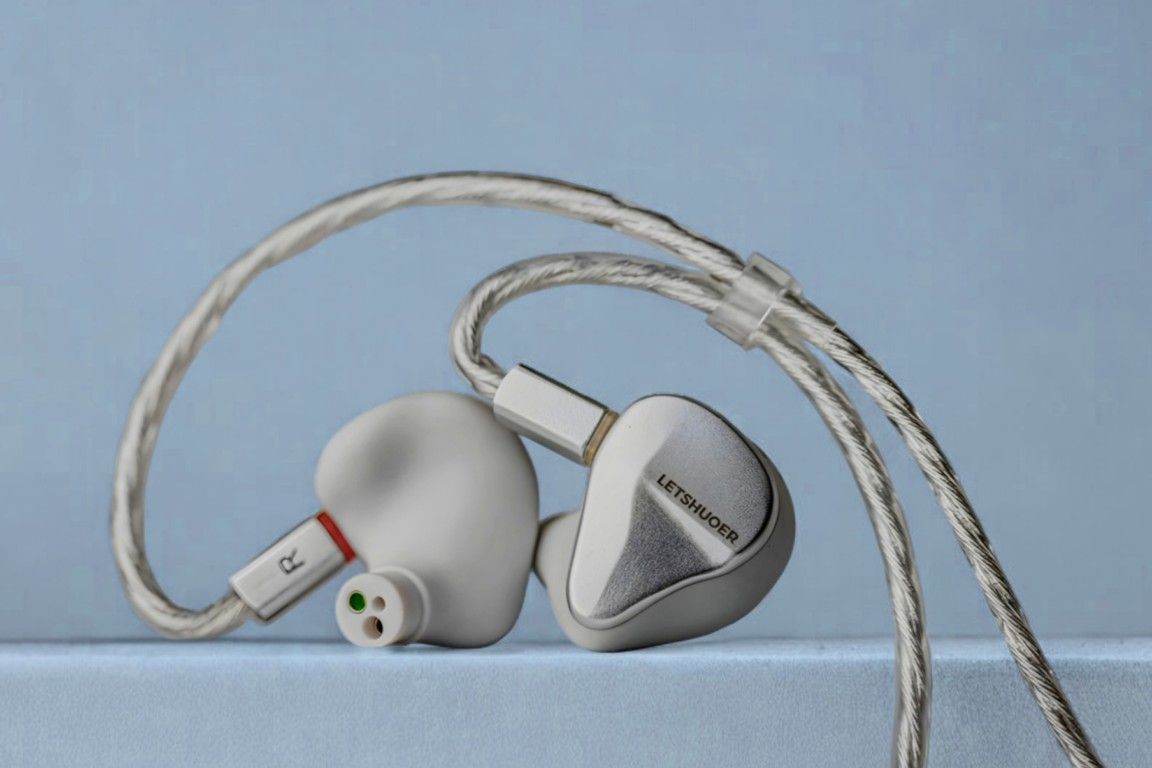
As Before by Olga Konkova
Crystal tips: The cajôn drum throws a punch, but relatively politely so. Both the piano and the female vocals sound absolutely wonderful. They’re natural and organic, sounding effortless and clear without sharp edges.
CP145 tips: The cajôn has significantly more flesh and body, and it certainly has more presence, competing for attention with the piano and vocals. The midrange is warmer, but the highs are crisp and clear.
It Could Be Sweet by Portishead
Crystal tips: The female vocals are perfectly rendered. They’re clear and natural; there is not a hint of sibilance. The bass is powerful enough, with great control and authority, but not overly dominating.
CP145 tips: There is much more bass presence. The vocals are still beautiful.
Escape Route by Boris Blank
Crystal tips: Great electronic track. Very snappy sounding; the bass gives a good foundation and doesn’t need to be stronger. There’s a good sense of space, and everything has an organic touch.
CP145 tips: The bass has more presence, but less than expected.
Brahms’ Symphony No. 2 III by Paavo Järvi
Crystal tips: The kettledrums are quite massive, and the bass goes deep, but they’re not too dominant. The strings and wind instruments are beautifully rendered. The separation of instruments is excellent, and even though there is good space between them, they are rendered with a good amount of body and presence.
CP145 tips: There’s more body to the drums, the sound is slightly warmer, but otherwise it’s pretty similar.
Young Vivaldi’s Violin Concerto RV 813 III by Ensemble Modo Antiquo
Crystal tips: The strings sound absolutely terrific. They have bite and attack, but at the same time, they have a rounded and organic feel to them. There is no harshness, but they’re not sounding laid-back either.
CP145 tips: quite similar. Slightly warmer mids, but the treble is still quite crisp.
Limit to Your Love by James Blake
Crystal tips: Blake’s vocals are clear and crisp. The bass is really excellently rendered, and the sub-bass is very present. I have found the Cadenza 4’s bass refreshingly undominant on many tracks, but it’s not rolling off with the sub-bass. I don’t need more bass quantity, especially on this track.
CP145 tips: The bass is more powerful, but not better. I like the Crystals more.
Angel by Massive Attack
Crystal tips: Also here, the sub-bass is very present, but the mid-bass is less pronounced than with many IEMs.
CP145 tips: The bass, especially the midbass, is stronger and more dominant. Great sense of image depth.
Fantasy by The XX
Crystal tips: Starting at 1:18, the bass is strong in the lowest regions. Everything else is clear and well separated.
CP145 tips: I feel the bass gets a bit too much with these tips.
Bullet in the Head by Rage Against The Machine
Crystal tips: Another bass-heavy track where the Cadenza 4 delivers a well-balanced bass that reaches deep with great definition. Good separation as always; everything is very detailed and organic-sounding, clear but not too crisp.
CP145 tips: A little more flesh and body to the midbass, which does this track good.
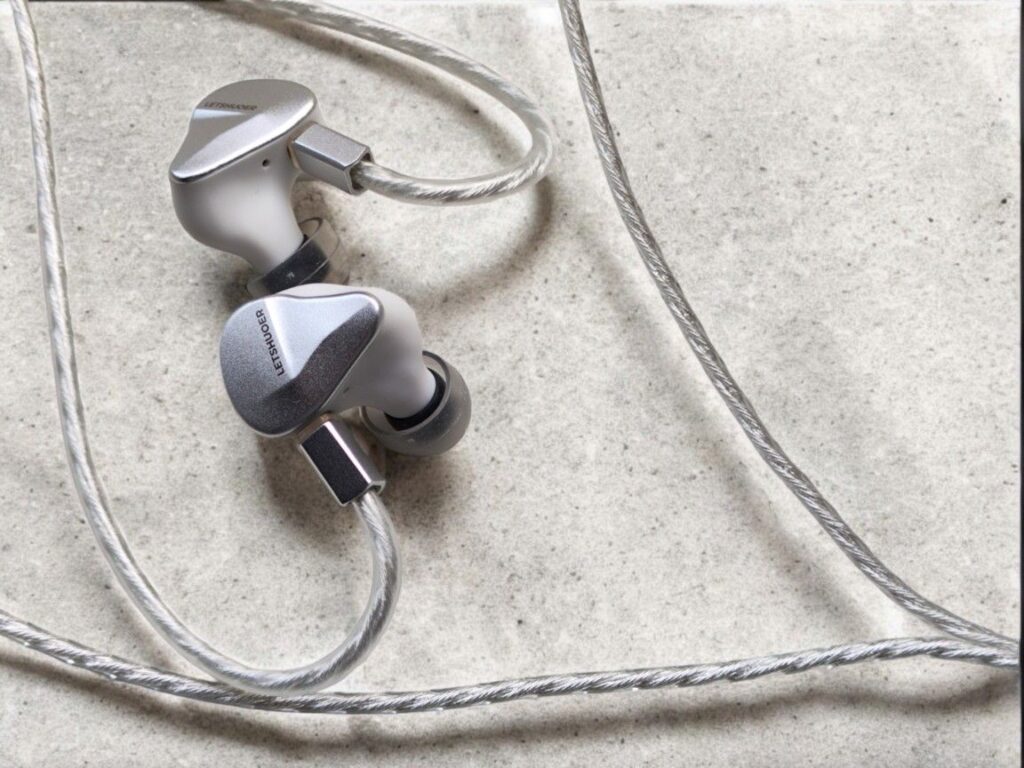
WRAPPING IT UP
Sound Signature
The sound signature of the Letshuoer Cadenza 4 will, to some extent, depend on the tips you are using. As mentioned, there are two types of tips included: The “vocal” tips are short, have a wide bore (opening), and offer a midrange focused sound. The “balanced” tips are longer with a medium-sized bore and offer more bass. This is typical of the difference between a wide and narrow bore.
I found the supplied “vocal” tips to sound quite similar to my wide-bore AZLA Crystals. The sound is focused more on the midrange than the bass. This is definitely not like the typical V, U, or W-shaped frequency curves that dominate the market. With no overly exaggerated bass or artificially crisp treble, there’s good room for the midrange to come through in the mix; the highs are clear and present but not too bright; the bass is punchy and deep, but it doesn’t have too much quantity.
I found the supplied “neutral” tips to sound similar to my medium-bore SpinFit CP145. They are giving significantly more bass presence. It’s still quite well balanced, but there should be enough bass presence to satisfy most listeners. There’s also more warmth, and the soundstage gets narrower but with a better sense of image depth.
Treble
The treble is detailed and nicely rounded. It’s clear but not too crisp. I’ve never experienced issues with sibilance on the Cadenza 4 with the Crystal tips, but with the CP145, I experienced it with one track. Mostly, however, I find the treble to be quite consistent between the tips.
Midrange
The midrange has a good presence with both tips. There is a relatively more pronounced midrange with the vocal and Crystal tips. With the CP145, it’s slightly warmer and less upfront because the bass is stronger.
Generally, the midrange sounds very natural, and there’s plenty of detail with both tips.
Bass
When it comes to the bass quantity, it again depends on the tips you are using with the Cadenza 4.
With the supplied “vocal” tips and the similar AZLA Crystal tips, the bass has excellent quality with good definition and texture. It has a natural and organic sound; it’s not blooming, but neither is it dry. It handles the lowest frequencies nicely.
With the supplied “balanced” tips and the similar SpinFit CP145 tips, the bass increases in quantity. Especially the mid-bass. The bass is of good quality, but it does not feel as extremely tight as with the other tips; it has more bloom and is thicker and fuller, relatively speaking.
Soundstage and Imaging
The Cadenza 4 has great imaging capabilities, with nice instrument separation and layering. The soundstage is decently wide and open, especially with the “vocal” and Crystal tips. The “balanced” and CP145 tips sound slightly less wide but give a better sense of image depth.
Detail, Dynamics and Timbre
The general detail level is high. There’s good definition and articulation across the frequency spectrum. Dynamics are also good, in a balanced way. It doesn’t feel exaggerated; it is always controlled, not letting things get carried away too much.
When it comes to the timbre, I really enjoy the Cadenza 4. The bass, midrange, and treble all sound very neutral in a positive way; the sound is natural and organic. It’s warmer with the “balanced” and CP145 tips than with the “vocal” and Crystal tips.
COMPARISONS
LETSHUOER GALILEO vs. CADENZA 4
The Letshuoer x Gizaudio Galileo is a two-driver hybrid with one dynamic driver and one balanced armature driver, currently priced around 100 USD.
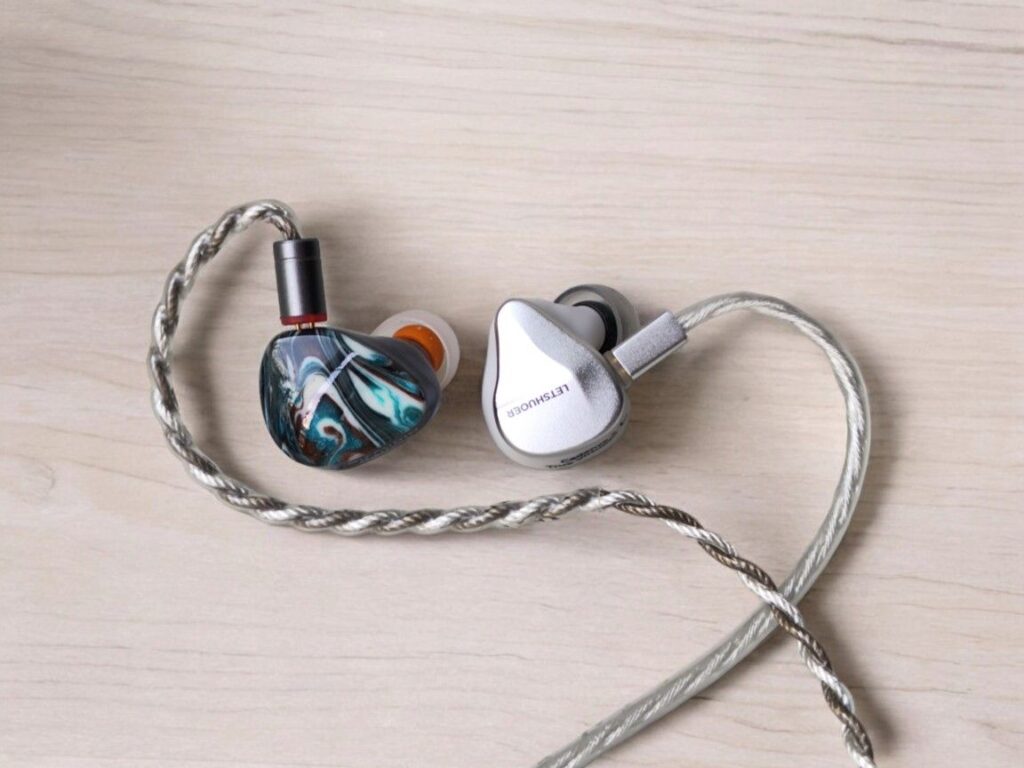
What I adore about the Galileo is that it diverges from the typical offerings of bass- and treble-oriented IEMs and instead focuses on the midrange.
Ever since I learned that the Galileo was to be discontinued, I have been hoping for an heir. And it might very well be the Cadenza 4, especially with wide bore tips. In many ways, it’s a Galileo with better bass.
They both put the midrange in the center of attention and deliver fabulous-sounding vocals, strings, and every other mid-range-focused instrument. They both have a very nice, clean treble that sounds organic and manages to be crisp and clear without ever becoming too bright or sibilant.
The area where they clearly diverge is in the bass. The Galileo is bass-light. Mostly, I find it to be very enjoyable because it has a polite bass presence, and the quality is usually very acceptable. However, sometimes I definitely would like some more bass quantity, and with certain tracks, the quality suffers in the sub-bass region. That is never an issue with the Cadenza 4, which has excellent bass performance. With the wide bore tips (vocal tips and Azla Crystals), the Cadenza 4 has just a bit more bass presence; with the medium bore tips (balanced and the CP145s), it has significantly more, although still keeping the midrange focus.
Both have excellent imaging and a good soundstage. Even though the Galileo also has a very good detail level, the Cadenza 4 is more coherent and especially better in the bass.
To finish where I started. The Cadenza 4 takes many of the great qualities of the Galileo and adds significantly better bass quality. Depending on the tips, there is also more bass quantity. The price is, however, significantly higher.
My full Galileo review is here.
The Letshuoer x Gizaudio Galileo is still available for purchase:
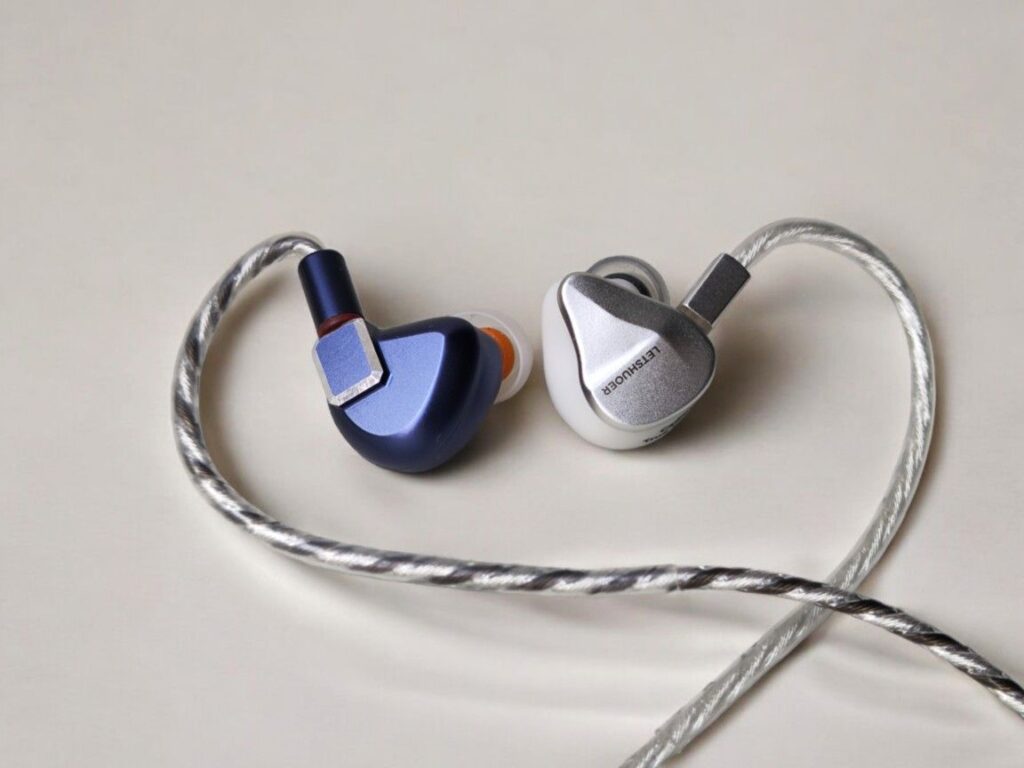
LETSHUOER S12 PRO vs. CADENZA 4
Letshuoer S12 PRO is a planar magnetic single-driver earphone that has become a reference planar magnetic IEM in its price class. It currently costs around 140 USD. I used the Cadenza 4 with the tips that have the most bass quantity for this comparison (medium bore SpinFit CP145 tips).
The S12 PRO is known for its excellent bass performance, and it certainly delivers the goods in the lower regions. Even though the Cadenza 4 has excellent bass, the S12 PRO is even better. Not in terms of quantity, but quality. There is just something about planar magnetic earphones and bass when it’s done right.
In the midrange and treble areas, however, the S12 PRO is not at the same level as the Cadenza 4. The treble is smoother and more refined. The midrange is more organic. Even though the S12 PRO does have a somewhat warm feel, it’s on the dry side and not as natural-sounding as the Cadenza 4. With regards to the sound stage, it feels a bit more open with the S12 PRO, while imaging is better with the Cadenza 4.
My Letshuoer S12 PRO review can be found here
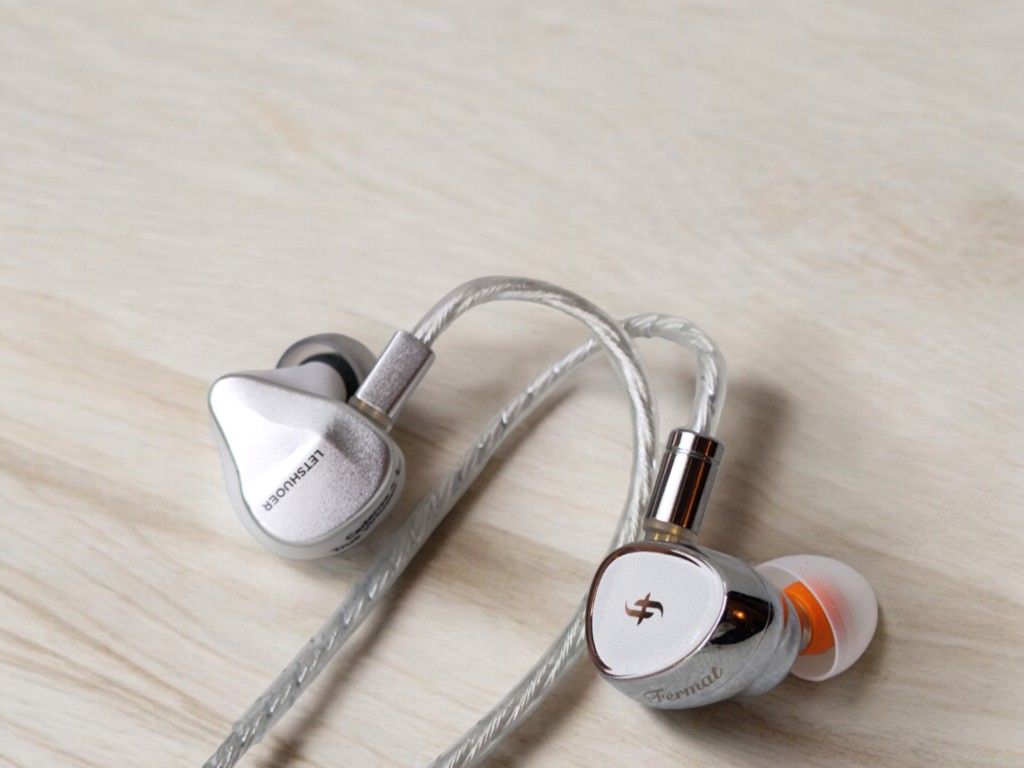
SIMGOT EA1000 vs. CADENZA 4
The EA1000 is a single-driver dynamic earphone that currently costs around 220 USD. For this comparison, I mostly used the Cadenza 4 with the wide-bore Crystal tips, which give less bass quantity. The medium-bore CP145 tips gave a similar impression but with more bass, though still slightly less quantity than the EA1000.
The Letshuoer Cadenza 4 and Simgot EA1000 are both terrific IEMs at their price point, and sound-wise, they have a lot in common.
With regards to technical aspects, they are quite different. The EA1000 is made of metal with interchangeable nozzles, and the Cadenza 4 is all 3D-printed resin. The EA1000 is smaller, and the Cadenza 4 is lighter.
The EA1000 utilizes a full-range single dynamic driver, quite different from the Cadenza 4, which has a dynamic driver for the bass and three balanced armatures for the rest.
The Cadenza 4 needs significantly higher volume in the amp to reach similar loudness.
When it comes to the sound, I do not have a clear preference. It varies from track to track, and I find them both to be excellent performers across genres and in all important aspects.
The EA1000 generally tends to sound even more airy and dynamic, but sometimes it is the other way around. The Cadenza 4 is very coherent and handles anything well. The EA1000 is more uneven in its performance. Mostly it is fabulous, but sometimes the sound gets a bit crowded and overly busy, especially in the mid-bass and lower midrange areas. This is not really something that bothers me on its own, but it gets very apparent in direct comparison.
All in all, these two IEMs are great alternatives. I find it difficult to recommend one over the other. I’d say the EA1000 is the most spicy, with a crisper treble and fuller bass, while the Cadenza 4 is playing things safer, not failing a step.
My Simgot EA1000 review can be found here
- Buy on Linsoul: Simgot EA1000
- Buy on Amazon Simgot EA1000
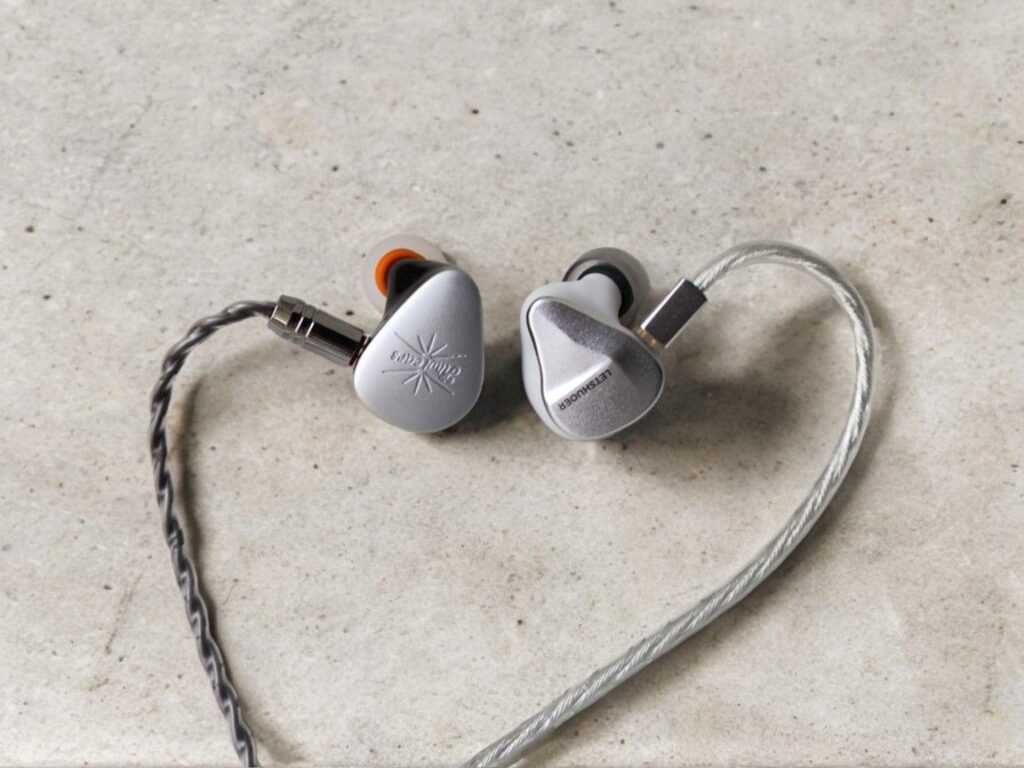
KIWI EARS QUINTET vs. CADENZA 4
The multi-driver hybrid Kiwi Ears Quintet is priced around 220 USD and has become a reference at its price point, with good reason.
The Quintet utilizes five drivers: a planar magnetic driver, a dynamic driver, a piezoelectric bone conductor, and two balanced armature drivers.
The Quintet and the Letshuoer Cadenza 4 have much in common. How different they are from each other depends on the tips; the Cadenza is much more susceptible to the types of tips used.
Generally, the Cadenza 4 is more midrange oriented. With the wide-bore Crystal tips, the mids are crisper and brighter than in the Quintet, with the medium-bore CP145 tips, they’re more similar.
The Quintet has slightly more bass when I use the CP145 tips on the Cadenza, and significantly more when I use the Crystal tips.
Using the Crystal tips, the Cadenza 4 has a wider soundstage; using the CP145 tips, the two IEMs are very similar. Otherwise, they perform excellently across the board. Great detail, great treble, great dynamics, very consistent performance.
My Kiwi Ears Quintet review can be found here
- Buy on Linsoul: Kiwi Quintet
- Buy on Amazon: Kiwi Quintet
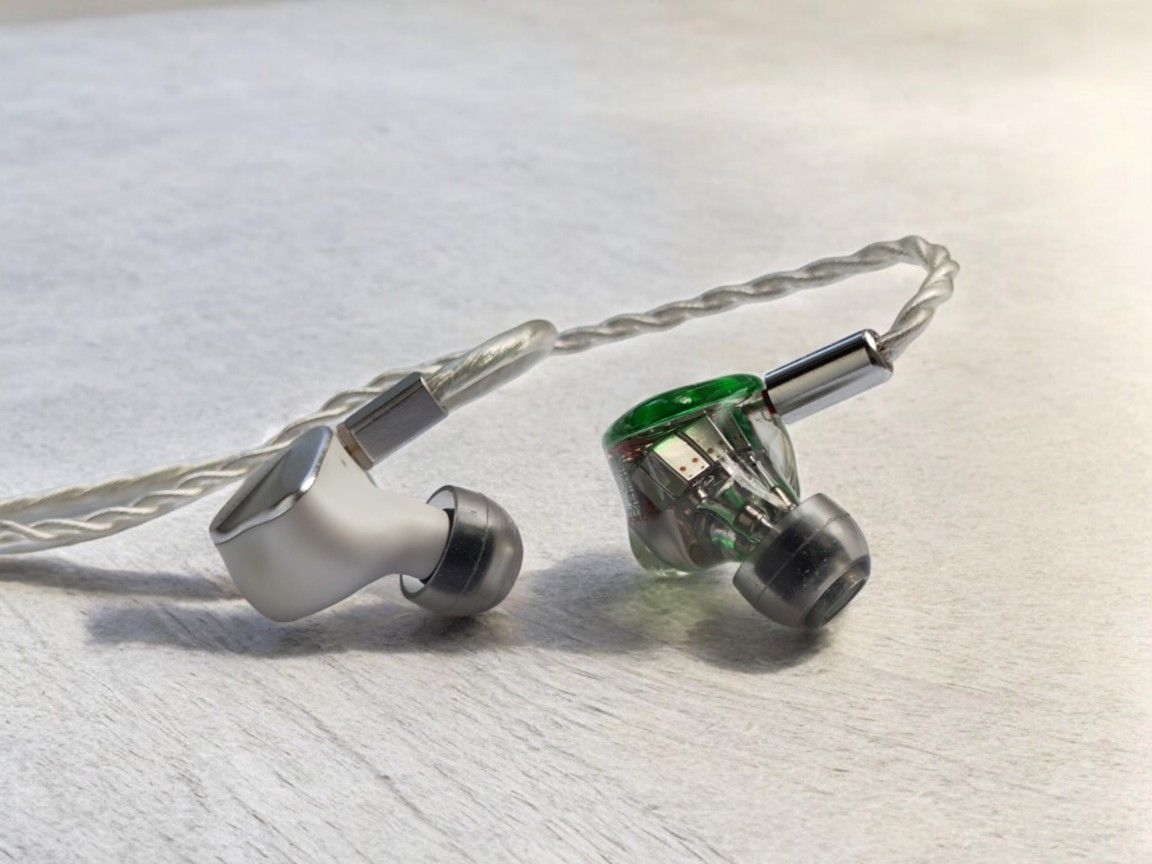
KIWI EARS ORCHESTRA LITE vs. CADENZA 4
The Orchestra Lite utilizes eight balanced armature drivers. It is priced at 250 USD, which is the same as the Cadenza 4. Like the Cadenza 4, it’s a midrange-oriented earphone, delivering polite bass weight and non-intrusive highs while letting the midrange shine.
When it comes to pure technical performance, the Cadenza 4 generally feels like the better earphone. It’s cleaner, tighter, and more precise. Although I adore the timbre of the Cadenza 4, the Orchestra Lite certainly has an appeal, but in a different way. It manages to sound thicker and still feel very detailed at the same time. This gives it a pretty unique sound that I can easily appreciate.
My Kiwi Ears Orchestra Lite review can be found here
- Buy on Linsoul: Kiwi Orchestra Lite
- Buy on Amazon: Kiwi Orchestra Lite
AMPLIFICATION
I have used the Topping A90 and the RME ADI-2 DAC FS for my listening so far. It’s just more practical for me when reviewing, and it’s always good to have neutral and high-quality upstream gear. However, most people will use these earphones with portable DAC/Amps or DAPs.
Starting with my POCO F5 phone’s headphone output, the Cadenza 4 sounds clearly underpowered. It’s loud enough at 80%, but severely lacks clarity and dynamics.
The xDuoo Link2 Bal is much better, but there’s still a significant step up to the desktop rig. Moving on to the Dragonfly Cobalt, things start to clear up. The THX Onyx USB C-dongle also works well.
The difference between the two best dongles and the desktop rig is not huge, but it’s audible. The Cadenza 4 obviously needs some extra headroom to shine, and its revealing nature makes it beneficial to use good sources.
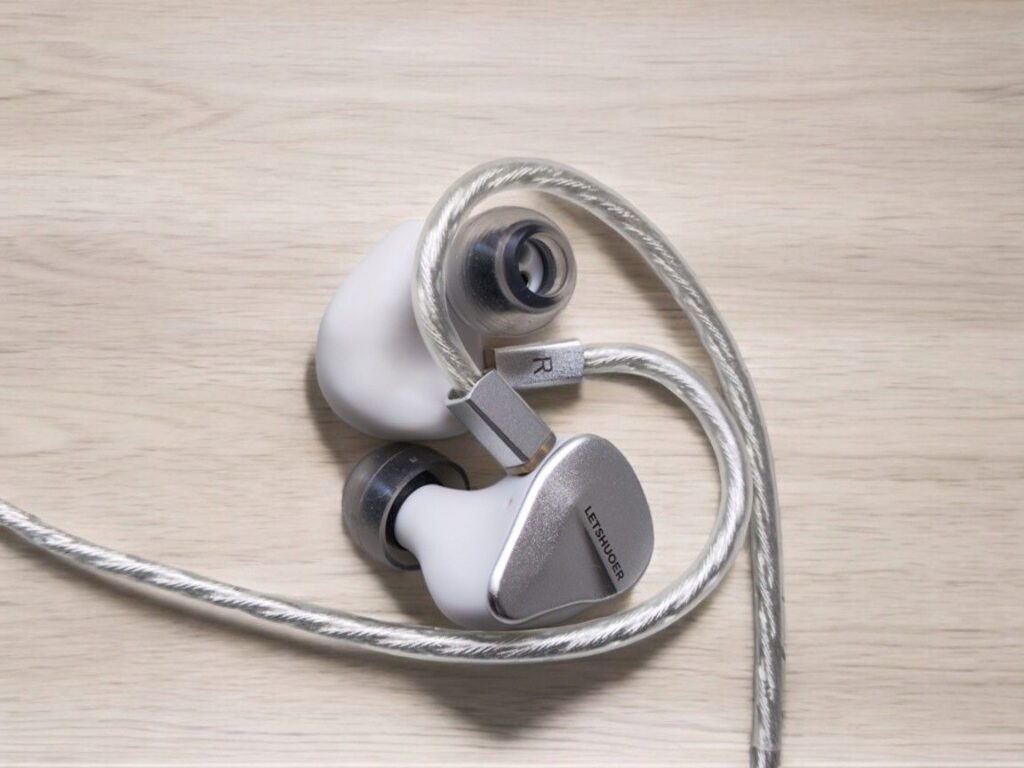
CONCLUSION
The Cadenza 4 offers a detailed and non-fatiguing sound experience with a refined treble, a present and articulate midrange with lots of detail, in addition to a very competent but not dominant bass.
It’s quite sensitive to tip-rolling, and the bass quantity depends on tip choice more than with many other in-ear monitors. The passive sound isolation is excellent, and the housing is lightweight and comfortable.
Even though the Letshuoer Cadenza 4 delivers great technical performance, it’s the tuning that stands out the most. It offers a midrange-focused sound where the bass is not stealing the show, yet reaches deep with great control.
Unless you’re looking for a bass-heavy IEM, the Cadenza comes highly recommended.
Manufacturer link: Letshuoer Cadenza 4
You can also purchase the Letshuoer Cadenza 4 here:
Any purchase you make on Amazon or Linsoul with any of our affiliate links will give us a small provision at no cost to you.
We only get a provision for items that are not returned, so there’s no incentive for us to recommend something that’s not good.
Linsoul : Headphones, Earbuds, Wireless Earbuds, Desktop DAC/AMP, Portable DAC/AMP, Digital Audio Players,
Amazon: Headphones, IEMs, Headphone Amplifiers, Home Audio or Anything else.
.
If you enjoyed this article or other content on The Headphoneer, you might consider leaving a small donation to keep this website up and running. No donation is too small. Thanks for supporting us!
If you like our work please follow us on Instagram, Facebook and Twitter , it will help us grow. Sharing is caring 🙂


